Euthanasia for Discus Fish
Hobbyists who collect Discus Fish quickly become entranced by the beauty and docile nature of this regal creature. Discus rapidly become beloved pets of their keepers and are essentially cared for and treated similarly to any other domesticated animal. Even with excellent care and proper treatment, Discus Fish obviously do not live forever. In fact, 10 years is the general lifespan for a Discus who has received the best management. At some point, it is important for keepers to understand when the life quality of the Discus is too poor and the fish should be humanely euthanized. However, there are a number of ways to make this determination and the best solution for euthanasia.
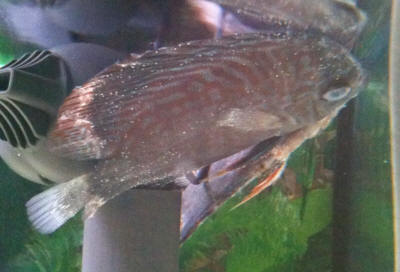
An extremely sick discus fish, near death.
Signs of Poor Quality of Life
Making the choice to end the life of a suffering Discus does not come easy for those who have cared for the fish. However, it is important for hobbyists to understand that quality of life plays an important role in this decision. The following offer some examples of a poor quality of life:
· The Discus has been treated with proper medications, but conditions are not improving.
· You have sought the advice of a trained professional who has determined no further treatment can be provided for an ailing fish.
· The illness poses a risk for other tank makes
This discus does not have a good chance of surviving into adulthood.
Which Method to Choose
The American Veterinary Medical Association (AVMA) releases a sporadic report that offers guidance on the appropriate methods for euthanasia based on the type of animal. For aquatic fish the following methods have been described as appropriate options:
· Injections agents used for euthanasia via IV, intracoelomic, IM, and intracardiac routes. Agents that have been used include:
o Pentobarbital
o Ketamine
o Propofol
Individuals who use the injection method should be well-trained and should be aware of state and federal laws surrounding the use of these specific agents.
· Immersion is a common method to use for euthanasia. Essentially, this is an intentional overdose that causes the fish to expire after 10 minutes. Agents used for this method include:
o Carbon dioxide
o Ethanol
o Isoflurane, sevoflurane
o Eugenol, isoeugenol, and clove oil
o Quinaldine sulfate
o Tricaine methanesulfonate
o 2-phenoxyethanol
Again, it is noted that individuals should be trained with the use of the agents as well as state and federal laws associated with their use.
· Physical methods for euthanasia may also be used by individuals who are regularly monitored and have proper training and equipment. Common physical methods include:
o Decapitation
o Manually applied blunt force trauma
o Cervical transection
o Rapid chilling
Improper Methods
Euthanasia is always considered as the most humane option for an ailing animal. There are methods that are considered unacceptable per AVMA guidelines. Improper methods include:
· Flushing dead or dying fish into a sewer or a septic as this could cause issues with water contamination and compounds in the water could delay the death of the fish.
· Slow-chilling or freezing unanesthetized fish
· Death due to exposure of chemicals
· Death due to anoxia (absence of oxygen)
· Death as a result of prolonged traumatic injury
Other Options
Some hobbyists do not participate in the act of euthanasia and simply allow nature to take its course. However, in doing so, it is critical to remember that some ailments are contagious to other Discus and proper steps should be taken to avoid the spread of illness such as removing the diseased fish from the tank.

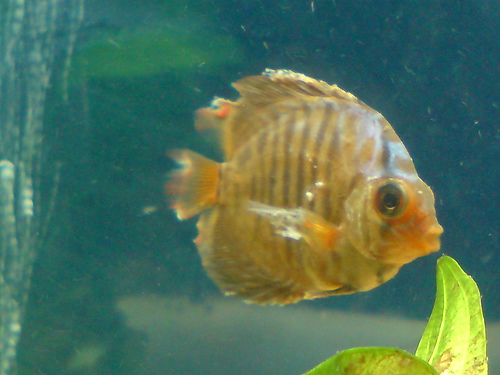



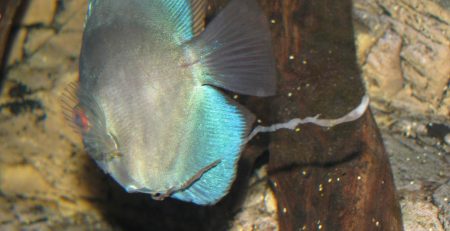

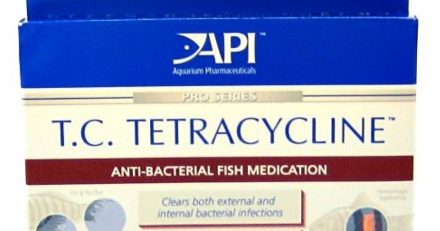

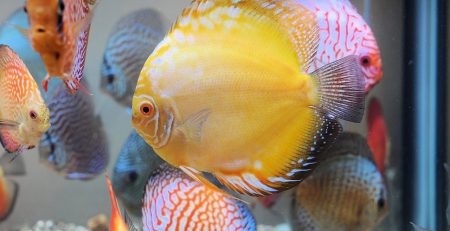


Leave a Reply
You must be logged in to post a comment.